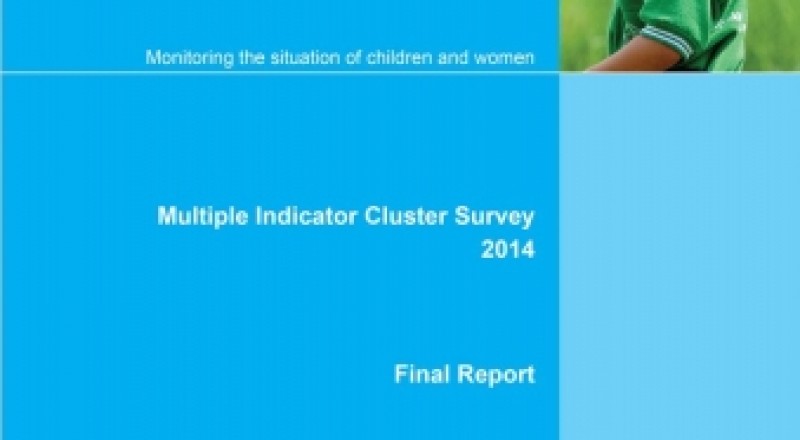Multiple Indicator Cluster Survey (MICS) is an international household survey initiative developed by UNICEF to assist countries in filling gaps for monitoring human development in general and the situation of children and women in particular. MICS produces statistically sound, internationally comparable estimates of social indicators and also provides data at the national and sub national level.

MICS collects data on children under five years of age as they are the focal point of many programmatic interventions in the areas of interest to governments, UNICEF and other partners. In addition, MICS also collects the data on children aged above 5 through household questionnaire as well as the questionnaire for individual women.
Till date, three rounds of MICS had been conducted in Nepal. Central Bureau of Statistics and the Secretariat of National Planning Commission are responsible to carry out the MICS with the technical and financial support from UNICEF and its partners.
CBS recently released the findings of the Nepal Multiple Indicator Cluster Survey (NMICS) 2014. The findings included data on child mortality, nutrition, child health, water and sanitation, reproductive health, early childhood development, education and literacy, child protection, HIV and AIDS, access to mass media and used of information and technology, well-being and tobacco and alcohol use.

Dissemination of the survey organized at Kathmandu
Round 4 of MICS was conducted by CBS in all 75 districts of Nepal from January to June 2014. The previous round of NMICS implemented in 2010 covered the mid and far western regions (24 districts) of Nepal.
According to UNICEF, “NMICS 2014 provides information and evidence on the situation of children and women in Nepal before the country was hit by 7.8 magnitude earthquake on 25 April 2015. The findings of the survey also fed into the Government’s Post Disaster Needs Assessment (PDNA) to identify the financial needs of post-earthquake recovery and reconstruction”. The NMICS survey findings will also contribute to the UN Secretary-General’s report to the UN General Assembly on the achievements of Millennium Development Goals.
The survey presents the data from an equity perspective by showcasing disparities concerning sex, region, area, education, household wealth, and other characteristics. The national survey of 12,405 households included interviews with 14,162 women aged 15-49 and 5,349 mothers/caretakers of children under five years. In addition, water testing was also performed in 1,492 households.
Major Survey Findings
- Total Fertility Rate: 2.3
- Adolescent birth rate: 70 births per 1000 women aged 15-19 years
- 50% of women aged 15-49 years and currently married were using some form of contraception, with 47% using modern methods and 3% using traditional methods
- Contraceptive prevalence rate - 19% among the women aged 15-19
- About 68% of women aged 15-49 years received antenatal care from skilled health personnel at least once and 60% had been recommended four antenatal care visits by provider;
- Around 55% of women aged 15-19 years delivered at a health facility and 56% were attended by skilled health provider
- Under-five child mortality rate is 38 deaths per 1000 lives and neonatal mortality rate is 23 per 1000 lives.
- About 30% children under five years were moderately underweight while 9% were classified as severely underweight; only 2% of the children were moderately overweight.
- Around 57% infants under six months of age are exclusively breastfed.
- Only 67% of the children aged 12-23 months had received all recommended vaccines by their 1st birthday



Comments(0)
No comments found.